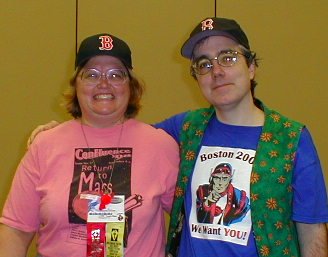The City and the Stars
If I were asked to pick a single book that defines “sense of wonder,” the one I’d pick Clarke’s The City and the Stars. This book – in my opinion, Clarke’s best work – is a marvelous tale of the incredibly far future, a future marvelous in itself but one that also has legends behind it that add to the awe and wonder. And expansion and reworking – and an improvement upon – Clarke’s somewhat shorter novel Against the Fall of Night – it’s one of the handful of SF books that I re-read every few years. And each time I do, I still feel the wonder I felt when I first encountered it (the shorter version was probably the first SF novel not by Wells, Verne, Doyle, or Burroughs that I read). It’s a great work of far future SF, and, even more so that the great works by Cordwainer Smith, Robert Silverberg, Jack Vance, and others, really is the defining piece for this subgenre.
The novel takes place more than a billion years in the future. The great city of Diaspar, as far as its inhabitants know, is the last city on earth and has existed in its present form for a billion years, its existence maintained and renewed by the city’s central computer mind and its memory banks. People, too, live forever; they emerge from the memory banks, live for a thousand years, then return to the memory banks to be resurrected tens or even hundreds of thousand of years later – to find Diaspar pretty much the same as they’d left it. Many once had a galactic empire, back at the dawn of time (for, from a billion years in the future, our entire history is only a very, very short span), but had been driven back to earth, as the old stories go, by the Invaders. Mankind put up a last heroic fight at the great fortress of Shalmirane, where mankind had agreed to leave space to the invaders and remain on earth.
The novel centers on Alvin, a unique – someone who emerges from the memory banks but who has no past life. He, unlike everyone around him, is truly a “child” (though 20 years old at the time of the story). And he is unique in another way. Everyone else in Diaspar ignores anything outside of the city, and is in fact afraid of what is outside. All the rest of the world is desert, they have been told, and they have been conditioned to fear leaving Diaspar. Alvin, on the other hand, craves to learn more, and his urges take him beyond Diaspar and eventually beyond earth.
Throughout the book, Clarke paints a picture of an extremely ancient world, while at the same time evoking a sense of wonder. He does this in several ways. One is by the use of legends. The citizens of Diaspar remember only bits and pieces of the history of the far past – the Invaders, Shalmirane, and so on. Presented in this way – incomplete, with everyone remembering only certain bits – is in line with any civilization looking to its ancient past (look at how we view the much more recent stories of the Trojan War).
Clarke also scatters fantastic events and settings in various points throughout the book. The world Alvin is in is fantastic, but things become even more so when he leaves Diaspar. His first encounter with an alien – a completely alien religious fanatic – at the Shalmirane is startling, but wonders begin coming even more quickly as Alvin leaves earth and travels to the planets of the seven suns. (I won’t say more here, for those who haven’t yet read the book. I’ll let you experience these for the first time yourself.)
And finally, Clarke knows not only what to say but what not to say. This is particularly true in the startling conclusion to the book, when he explains in two or three pages the true story of earth’s past. It’s one of the great bits of creating a remarkable and awesome future in SF, but part of the wonder of it is due to Clarke knowing not to fill in the details, to just tell what had happened in broad outline. While the reader is left wanting to know much more, Clarke knows that to try to give more would destroy some of the magic. (Anyone who has read Greg Benford’s sequel to Clarke’s works knows this is true. Benford – normally a very good writers – drains Clarke’s universe of its wonder by giving us too many details and trying to explain too much).
Clarke, like Asimov, has been criticized for creating characters without much depth, who are there just for the sake of the story. This is true (though in some ways beside the point) for a number of his works. It is not true for The City and Stars. Alvin is a well drawn character, who evolves and changes as the novel progresses. Some of the characters around him are also done well in their own right, though (as one character notes) they are drawn into the whirlpool that Alvin leaves in his wake. Alvin is a dynamic character, whose energy and intelligence change not just the world but the galaxy.
I’m not sure what else there is to say about this marvelous novel. It was published in 1956, and unfortunately, 1957 was one of those years before Hugo categories were firmly established and the only Hugos presented were for best magazines (American, UK, and fan). Thus, one of SF’s best books didn’t win a Hugo. But it remains a great book, one that, nearly 50 years after it’s initial publication, still presents one of the most compelling visions of the far future ever done.

